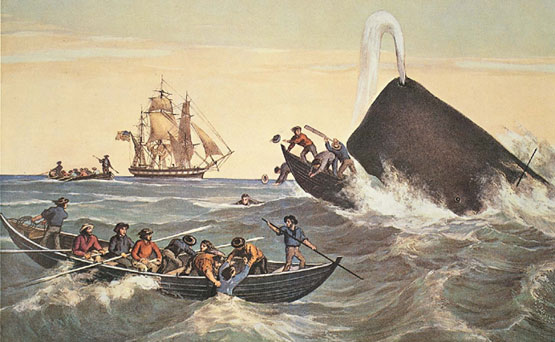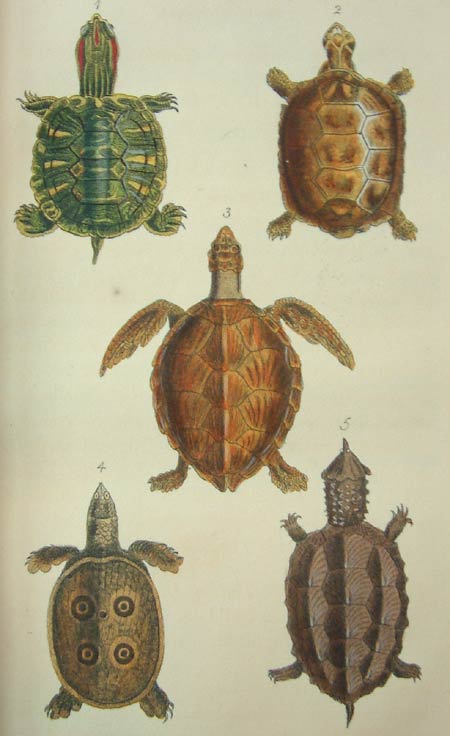
Gracias a mi amigo
 Stevan Zivkov Andricin, que me señaló este post de V. Miklós en el que recopila una serie de ilustraciones antiguas en las que podemos ver hasta qué punto las descripciones orales van distorsionando poco a poco la imagen real de los animales invisibles que se ocultan tras ellas. En nuestro blog hemos dado cuenta de ello en repetidas ocasiones, y hemos procurado darle un poco de orden en nuestra página dedicada a la bibliografía zoológica ilustrada. De hecho, muy a menudo es la descripción gráfica la que va dejando rasgos persistentes en el tiempo, como ya hemos observado al respecto acerca del rinoceronte, la pantera, el cachalote, el elefante, el mono y otros ejemplos más o menos emblemáticos.
Stevan Zivkov Andricin, que me señaló este post de V. Miklós en el que recopila una serie de ilustraciones antiguas en las que podemos ver hasta qué punto las descripciones orales van distorsionando poco a poco la imagen real de los animales invisibles que se ocultan tras ellas. En nuestro blog hemos dado cuenta de ello en repetidas ocasiones, y hemos procurado darle un poco de orden en nuestra página dedicada a la bibliografía zoológica ilustrada. De hecho, muy a menudo es la descripción gráfica la que va dejando rasgos persistentes en el tiempo, como ya hemos observado al respecto acerca del rinoceronte, la pantera, el cachalote, el elefante, el mono y otros ejemplos más o menos emblemáticos.Tras la selección de Miklós, os ofrezco unos cuantos ejemplos más extraídos de posts anteriores de nuestro propio blog.
Una selección de antiguas ilustraciones naturalistas:
(publicadas originalmente por Vincze Miklós aquí)
How Europeans Imagined Exotic Animals Centuries Ago, Based on Hearsay
 Expand
Expand
People
have been drawn to stories about exotic animals throughout our history.
The further you go back in that history, the less likely those stories
were accurate. Here is a gorgeous compendium of illustrations showing
how people imagined real animals they had only heard about.
Crocodiles from Liber Floridus (Book of Flowers), an encyclopedia by Lambert, Canon of Saint-Omer between 1090 and 1120.
 Expand
Expand
 Expand
Expand
(via Erik Kwakkel)
Animals from the Rochester Bestiary, c. 1225-1250
A crocodile:
 Expand
Expand
Elephants:
 1Expand
1Expand
Lions and other animals:
 Expand
Expand
A lion:
 2Expand
2Expand
A colorful panther:
 3Expand
3ExpandA crocodile from the Northumberland Bestiary, fol. 49v, mid-1250s
 Expand
ExpandAn elephant from the 13th century, by Guillaume le Clerc
 4Expand
4Expand
An elephant from Italy, c. 1440
 Expand
Expand
(via British Library)
Lions from the Ashmole Bestiary (f.10v), 1511
 Expand
Expand
A whale from Adriaen Coenen's Visboek (Fish Book), 1560s
 Expand
Expand
(via Koninklijke Bibliotheek)
An elephant and a giraffe by Noè Bianco, 1568
 Expand
Expand
(via NYPL Digital Library)
The History of Four-Booted Beasts and Serpents, by Edward Topsell, 1658
 5Expand
5Expand 6Expand
6Expand
A beaver:
A dromedary:
 Expand
ExpandA history of the Earth and animated nature, by Oliver Goldsmith, 1825
A hippo:
 Expand
Expand
Seals:
 Expand
Expand
Lions:
 Expand
ExpandA striped hyena, by Aloys Zötl, 1831
 Expand
Expand
Gibbons, by Aloys Zötl, 1833
 Expand
Expand
The Hoolock Gibbons, by Aloys Zötl, 1835
 Expand
ExpandThe Cheetah, by Aloys Zötl, 1837
 Expand
Expand
A rhinoceros, by Aloys Zötl, 1861
 Expand
Expand
A sea turtle, by Aloys Zötl, 1867
 9Expand
9Expand
A walrus, by Aloys Zötl, 1879
 10Expand
10Expand
________
Anteriormente, en "La voz del animal invisible", dimos cuenta de otros jugosos ejemplos que ofrecemos a continuación. Si queréis concretar su origen, podéis hacerlo en nuestra página específica de bibliografía naturalista comentada.http://mafa-elanimalinvisible.blogspot.com.es/p/bibliografia-naturalista-comentada.html













































































































No hay comentarios:
Publicar un comentario